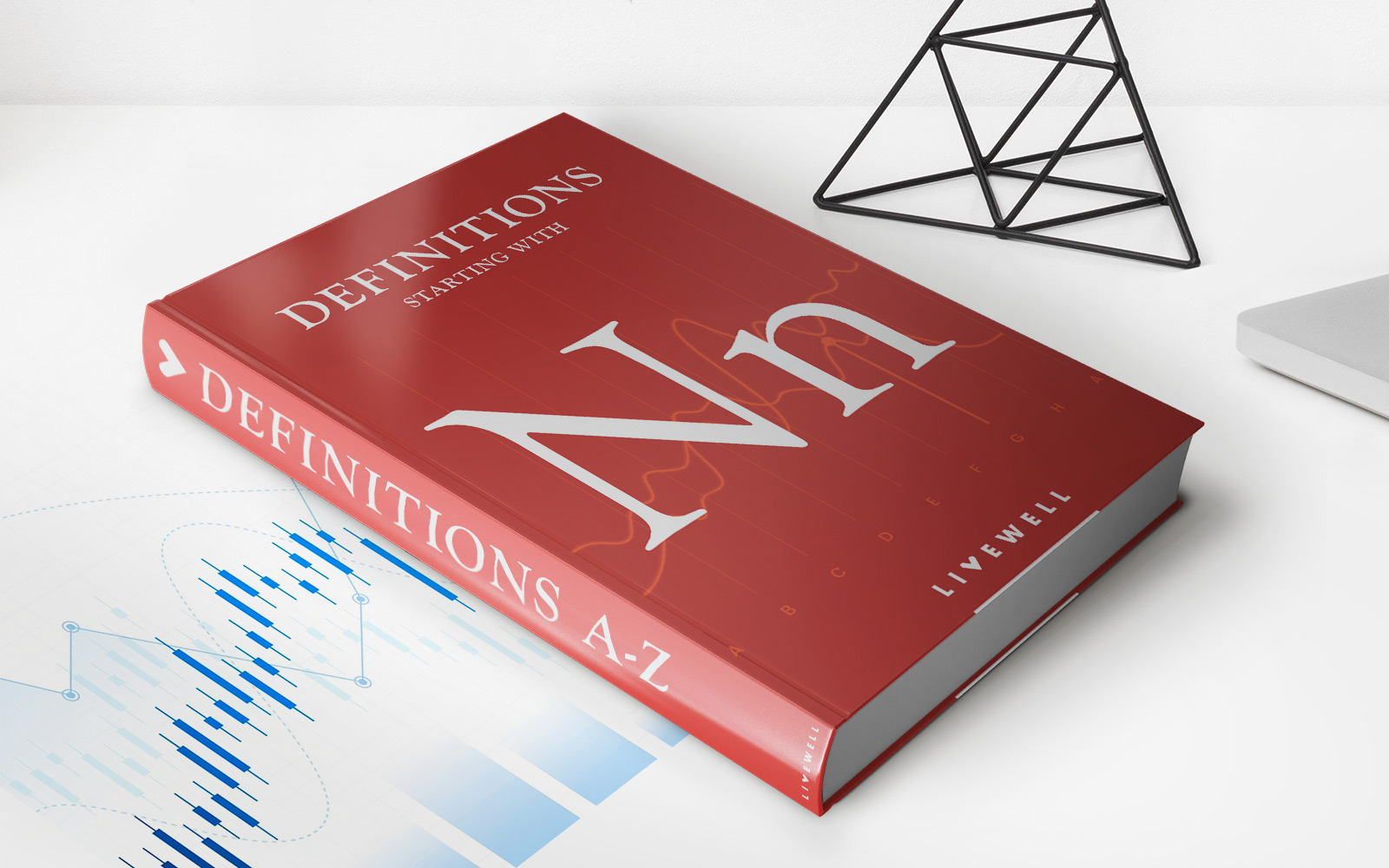

Finance
How Popular Are Financial Education Apps
Modified: January 5, 2024
Discover the popularity of finance as a subject through educational apps. Explore how financial education apps are transforming the way people learn about managing their money.
(Many of the links in this article redirect to a specific reviewed product. Your purchase of these products through affiliate links helps to generate commission for LiveWell, at no extra cost. Learn more)
Table of Contents
- Introduction
- Definition of Financial Education Apps
- Benefits of Using Financial Education Apps
- Popular Financial Education Apps in the Market
- User Reviews and Ratings of Financial Education Apps
- Challenges and Limitations of Financial Education Apps
- Impact of Financial Education Apps on Financial Literacy and Behavior
- Conclusion
Introduction
In today’s fast-paced and ever-evolving digital world, technology has become an integral part of our daily lives. From shopping to communication, there is no denying the significant role technology plays in simplifying and enhancing various aspects of our lives. The realm of personal finance is no exception to this trend, as financial education apps have emerged as powerful tools in helping individuals manage their money and make informed financial decisions.
Financial education apps are mobile applications designed to offer a wide range of financial resources, tools, and educational content to users. These apps aim to improve financial literacy by providing insights into budgeting, saving, investing, and other aspects of personal finance. The convenience, accessibility, and user-friendly interfaces of these apps have made them increasingly popular among individuals of all ages and backgrounds.
One of the main reasons why financial education apps have gained traction is their ability to bridge the gap between traditional financial knowledge and the digital era. Unlike traditional financial education methods, which often require individuals to attend seminars or read lengthy textbooks, these apps provide a more interactive and engaging learning experience that fits seamlessly into users’ busy lifestyles.
Furthermore, financial education apps offer a personalized approach to learning. They take into account users’ specific financial goals, income, expenses, and risk tolerance to deliver tailored lessons and recommendations. This customization ensures that users receive relevant and practical guidance that can be applied to their unique financial situations.
Another significant benefit of financial education apps is their ability to track and analyze users’ financial behaviors. These apps often integrate with bank accounts and credit cards, allowing users to monitor their spending habits, identify areas for improvement, and set realistic saving goals. By providing real-time insights into users’ financial activities, these apps empower individuals to be more mindful of their spending and take control of their finances.
As financial literacy continues to be a pressing issue globally, financial education apps have emerged as a promising solution to improve financial literacy rates. They offer a convenient and accessible platform for individuals to enhance their financial knowledge and skills, empowering them to make informed financial decisions. In the following sections, we will delve deeper into the specific benefits, popular apps in the market, user reviews, challenges, and the overall impact of financial education apps on financial literacy and behavior.
Definition of Financial Education Apps
Financial education apps are digital tools designed to provide users with comprehensive financial education and resources. These mobile applications offer a wide range of features and functionalities aimed at improving users’ financial literacy and empowering them to make better financial decisions.
These apps cover various aspects of personal finance, including budgeting, saving, investing, debt management, retirement planning, and more. They typically offer educational content in the form of articles, videos, courses, and interactive tools that help users learn about financial concepts and strategies.
One key feature of financial education apps is their ability to track and manage personal finances. Users can link their bank accounts, credit cards, and other financial accounts to these apps to monitor their spending, track expenses, and analyze their financial behavior. Some apps also provide budgeting tools that allow users to set financial goals, create budgets, and receive notifications and reminders to stay on track.
Another important aspect of financial education apps is their focus on investment education. Many of these apps provide resources and tools to educate users about investing in stocks, bonds, mutual funds, and other investment vehicles. Some apps even offer virtual trading platforms where users can practice investing without risking real money.
Additionally, financial education apps often incorporate gamification elements to make learning and managing finances more interactive and engaging. They may offer quizzes, challenges, and rewards to incentivize users to continue learning and improving their financial knowledge and habits.
It is worth mentioning that financial education apps can cater to different target audiences. While some apps are designed for general personal finance education, others cater to specific groups, such as college students, young professionals, or individuals planning for retirement. These apps tailor the content and features to the specific needs and circumstances of their target users.
Overall, financial education apps aim to provide accessible, convenient, and engaging financial education to individuals of all backgrounds. By using these apps, users can gain the knowledge, skills, and confidence required to navigate the complexities of personal finance and achieve their financial goals.
Benefits of Using Financial Education Apps
Financial education apps offer numerous benefits to users looking to improve their financial literacy and take control of their finances. Let’s explore some of the key advantages of using these apps:
- Convenience and Accessibility: One of the significant advantages of financial education apps is their convenience. With these apps, users can access financial education resources and tools anytime, anywhere, directly from their smartphones. Whether you’re on your daily commute or relaxing at home, you can easily engage with educational content and manage your finances at your own pace.
- Customized Learning Experience: Financial education apps typically offer personalized learning experiences. They take into account users’ specific financial goals, income, expenses, and risk tolerance to provide tailored lessons and recommendations. This customization ensures that users receive relevant and practical guidance that can be applied to their unique financial situations.
- Budgeting and Expense Tracking: Many financial education apps include features that help users budget and track their expenses. By linking their bank accounts and credit cards to these apps, users can monitor their spending habits, categorize their expenses, and identify areas where they can cut back or save. This real-time visibility into their financial behavior empowers users to make informed decisions and manage their money more effectively.
- Investment Education: Investing can be intimidating for many individuals, but financial education apps offer invaluable resources to demystify the process. These apps provide educational content and tools to help users understand investment basics, evaluate different investment options, and build a diversified portfolio. Some apps even offer virtual trading platforms where users can practice investing without risking real money.
- Goal Setting and Progress Tracking: Financial education apps often include goal-setting features that allow users to set financial objectives and track their progress. Whether it’s saving for a down payment on a house or paying off student loans, these apps provide visualizations and reminders to keep users motivated and on track with their financial goals.
- Community and Support: Many financial education apps have built-in communities or forums where users can interact with like-minded individuals, ask questions, and share their experiences. This sense of community fosters support and encouragement, making the learning process more engaging and enjoyable.
- Enhanced Financial Literacy and Confidence: By consistently using financial education apps, users can significantly improve their financial literacy and gain confidence in managing their finances. These apps provide access to educational content from industry experts, enabling users to expand their knowledge and develop the skills needed to make informed financial decisions.
In summary, financial education apps provide users with the convenience of accessing financial education resources anytime, personalized learning experiences, tools for budgeting and expense tracking, investment education, goal setting and progress tracking features, a supportive community, and the opportunity to enhance financial literacy and confidence. By leveraging the benefits of financial education apps, individuals can improve their financial well-being and work towards achieving their financial goals.
Popular Financial Education Apps in the Market
The market for financial education apps is vast and diverse, with a wide range of options available to users. Let’s explore some of the popular financial education apps that have garnered a significant user base and positive reviews:
- Mint: Mint is a comprehensive financial management app that offers budgeting, expense tracking, bill payment reminders, and investment tracking features. It provides users with a holistic view of their financial health and allows them to set financial goals and monitor progress. Mint is known for its user-friendly interface and extensive integration with various financial institutions.
- Personal Capital: Personal Capital is a popular app that emphasizes investment tracking and retirement planning. It offers a suite of tools to help users manage their investments, track their net worth, and plan for retirement. Additionally, Personal Capital provides personalized financial advice from certified financial planners.
- Acorns: Acorns is a micro-investing app that encourages users to save and invest their spare change. It automatically rounds up users’ purchases to the nearest dollar and invests the difference in a diversified portfolio. Acorns also offers educational content and financial tips to help users grow their investments over time.
- YNAB (You Need A Budget): YNAB is a budgeting app that focuses on helping users gain control of their finances. It follows a zero-based budgeting approach, where every dollar is assigned a specific job. YNAB offers features like goal tracking, expense tracking, and detailed reports to help users stay on top of their financial goals and make informed spending decisions.
- Robinhood: Robinhood is an investment app that aims to make investing accessible to all. It offers commission-free trading of stocks, exchange-traded funds (ETFs), and cryptocurrencies. Robinhood provides a simple and intuitive interface for beginners and offers educational resources and market data to help users make informed investment choices.
These are just a few examples of the popular financial education apps available in the market. It’s important to note that each app has its own unique features, strengths, and target audience. It’s recommended that users explore these apps, read reviews, and consider their own financial goals and preferences to determine which app aligns best with their needs.
It’s also worth mentioning that the popularity of financial education apps can vary based on geographic location and user demographics. Users may find localized apps or apps that cater specifically to certain age groups, professions, or financial objectives. Exploring app stores and reading user reviews can provide valuable insights into the popularity and suitability of different financial education apps.
Remember, while financial education apps can be valuable tools for improving financial literacy, it’s essential to complement app usage with a holistic approach to financial education. Engaging in additional resources like books, podcasts, seminars, and seeking advice from financial professionals can further enhance one’s financial knowledge and decision-making abilities.
User Reviews and Ratings of Financial Education Apps
When considering using a financial education app, it’s helpful to take into account the experiences and opinions of other users. User reviews and ratings provide valuable insights into the app’s usability, effectiveness, and overall user satisfaction. Let’s explore some common themes and trends found in user reviews of financial education apps:
- User-Friendly Interface: Many users appreciate financial education apps that offer a clean and intuitive interface. Apps with simple navigation, clear visuals, and easy-to-understand features tend to receive higher ratings. Users find it easier to engage with the app and navigate through different sections when the interface is user-friendly.
- Comprehensive Financial Tools: Users often appreciate apps that offer a wide range of financial tools and features. Apps that include budgeting, expense tracking, investment tracking, goal setting, and educational content tend to receive positive reviews. Users value the convenience of having multiple financial resources within a single app.
- Integration with Financial Institutions: Many users find it beneficial when financial education apps can seamlessly integrate with their banking and investment accounts. Apps that can automatically sync transactions, provide real-time balance updates, and categorize expenses accurately receive positive reviews. Users appreciate the convenience of having all their financial information in one place.
- Accuracy and Reliability: Users expect financial education apps to provide accurate and reliable information. They value apps that can accurately categorize expenses, track investments, and provide up-to-date financial data. Apps that have reliable data sources and regularly update information tend to receive higher ratings.
- Educational Content Quality: The quality and depth of educational content offered by financial education apps play a significant role in user satisfaction. Users appreciate well-researched and comprehensive educational resources that explain financial concepts in a clear and concise manner. Apps that offer a variety of content formats, such as articles, videos, and interactive tools, tend to receive positive reviews.
- Customer Support: Users value prompt and responsive customer support when using financial education apps. Apps that provide timely and helpful support receive positive reviews. Users appreciate when their queries or issues are addressed promptly and efficiently.
- Data Security: Data security is a top concern for users when it comes to financial education apps. Apps that prioritize data protection, encryption, and have transparent privacy policies tend to receive higher ratings and positive reviews. Users appreciate when apps prioritize their privacy and take necessary measures to safeguard their financial information.
It’s important to note that user reviews and ratings can vary depending on individual experiences and expectations. It’s recommended to read multiple reviews and consider both positive and negative feedback to get a balanced understanding of the app’s strengths and weaknesses.
Furthermore, user reviews can provide valuable insights into how different apps cater to specific user demographics and financial goals. Some apps may be more suitable for beginners, while others may cater to advanced investors or individuals looking for specific financial functionalities.
Before making a decision, it’s beneficial to explore app stores, financial forums, and social media platforms to read user reviews and compare ratings. This research can help users make informed decisions and select the financial education app that best aligns with their needs and preferences.
Challenges and Limitations of Financial Education Apps
While financial education apps offer numerous benefits, it is important to be aware of their challenges and limitations. Understanding these limitations can help users set realistic expectations and make informed decisions about using these apps. Let’s explore some common challenges and limitations of financial education apps:
- Lack of Personalized Advice: Financial education apps provide general guidance and educational resources, but they may not offer personalized financial advice tailored to individual circumstances. Users should be cautious and seek professional financial advice when faced with complex financial decisions.
- Reliance on Self-Motivation: Financial education apps require users to be proactive and motivated in utilizing the resources and tools available. While these apps provide valuable information, users must take the initiative to engage with the content and implement the suggested strategies for the desired financial outcomes.
- Dependence on Internet Access: Financial education apps rely on internet connectivity to provide real-time updates, sync financial data, and deliver educational content. Users in areas with limited or unreliable internet access may face challenges in accessing and utilizing these apps effectively.
- Security and Privacy Concerns: Users must consider the security measures implemented by financial education apps to protect their personal and financial information. It is crucial to choose apps that prioritize data security and have robust privacy policies in place to safeguard sensitive user data.
- Potential Inaccuracy or Delayed Updates: Financial education apps rely on the accuracy of the data obtained from financial institutions and other sources. There is a possibility of delays in syncing transactions or inaccuracies in expense categorization, which may impact the app’s overall effectiveness in providing real-time financial insights.
- Limited Scope of Coverage: While financial education apps aim to cover a broad range of financial topics, they may not address every aspect of personal finance in-depth. Users may need to supplement their knowledge with additional resources or seek specialized advice for complex financial situations.
- Technology Limitations: Not all users may be comfortable or familiar with using mobile apps or navigating digital interfaces. Some individuals may prefer traditional methods of learning or managing finances and may find it challenging to adapt to the technological requirements of financial education apps.
- Continuous Learning and Maintenance: Financial education is an ongoing process, and users must commit to continuous learning and staying updated with changing financial trends and regulations. It may require regular maintenance and time investment to derive maximum benefits from financial education apps.
Despite these challenges and limitations, financial education apps can still be valuable tools in improving financial literacy and empowering individuals to make informed financial decisions. Users should approach these apps as part of a comprehensive financial education strategy that may include other resources and professional advice.
By being aware of these limitations, users can set realistic expectations, leverage the strengths of the apps, and make the most of the available resources to enhance their financial knowledge and improve their financial well-being.
Impact of Financial Education Apps on Financial Literacy and Behavior
Financial education apps have had a significant impact on improving financial literacy levels and influencing positive financial behaviors among users. Let’s explore the ways in which these apps have made a difference:
- Increased Access to Financial Education: Financial education apps have significantly expanded access to financial education resources. These apps provide individuals of all backgrounds with the opportunity to learn about personal finance at their own pace and convenience. Users can access educational content, tools, and guidance anytime, anywhere, breaking down barriers to financial knowledge.
- Improved Financial Awareness: By regularly using financial education apps, users become more aware of their financial situation. Through features like expense tracking and budgeting tools, individuals gain a better understanding of their spending habits, areas for improvement, and the potential to save. This increased awareness leads to more informed financial decisions.
- Enhanced Financial Skills and Knowledge: Financial education apps provide interactive and engaging educational resources that help users develop essential financial skills and knowledge. Users can learn about topics such as budgeting, saving, investing, and debt management. The practical nature of these apps allows individuals to apply learned concepts to their own financial situations, leading to improved financial competency.
- Encourages Better Financial Habits: Financial education apps often incorporate features that promote healthy financial habits. With tools such as goal-setting, expense tracking, and automated saving, users are encouraged to adopt responsible financial behaviors. These apps can help individuals establish saving routines, reduce unnecessary spending, and make progress toward their financial goals.
- Greater Financial Confidence: As users increase their financial knowledge and improve their financial habits, they often experience a boost in their financial confidence. Financial education apps empower individuals to take control of their financial lives, make informed decisions, and navigate complex financial situations with greater confidence and competence.
- Promotes Long-Term Financial Planning: Financial education apps emphasize long-term financial planning by offering features that help users set and track their financial goals. By providing visibility into progress and offering insights on retirement planning, investment strategies, and debt management, these apps encourage users to think beyond immediate financial needs and take a more proactive approach to long-term financial security.
- Impact on Future Generations: Financial education apps have the potential to impact future generations by instilling good financial habits from an early age. Parents can leverage these apps to teach their children about money management and encourage responsible financial behaviors, helping to build a foundation for a financially literate future.
It’s important to note that the impact of financial education apps may vary among individuals based on their level of engagement, willingness to learn, and commitment to implementing financial strategies. While these apps provide valuable resources, it is essential for users to supplement their learning with additional financial education opportunities and seek personalized financial advice for complex financial matters.
Overall, financial education apps have proven to be valuable tools in improving financial literacy, promoting healthy financial behaviors, and empowering individuals to take control of their financial future.
Conclusion
Financial education apps have emerged as powerful tools in promoting financial literacy and empowering individuals to make informed financial decisions. These apps offer a convenient, accessible, and personalized learning experience that fits seamlessly into users’ busy lives. By providing a wide range of educational resources, budgeting tools, expense tracking features, and investment guidance, financial education apps have significantly contributed to improving financial awareness, skills, and behaviors.
Through the use of financial education apps, individuals can gain a better understanding of their financial situation, improve their money management skills, and set and track their financial goals. These apps have the potential to transform financial behaviors by instilling responsible habits and encouraging long-term financial planning. The gamification elements and community support offered by some apps further enhance the learning experience and foster engagement among users.
While financial education apps have had a positive impact, it’s important to recognize their limitations. These limitations include the lack of personalized advice, reliance on self-motivation, and potential security and privacy concerns. Users should approach these apps as part of a comprehensive financial education strategy, augmenting their learning with additional resources and seeking professional advice when needed.
In conclusion, financial education apps have revolutionized how individuals access and engage with financial education. They have made financial knowledge more accessible, personalized, and interactive, enabling users to improve their financial literacy, develop healthy financial habits, and work towards their financial goals. By utilizing these apps alongside other educational resources, individuals can enhance their financial well-being and confidently navigate the complex world of personal finance.














